Choosing the perfect side table for your living room is a task that is often overlooked. A side table should not only fit seamlessly into your interior and reflect your style, but it should also act as a functional piece of furniture. That’s why, we’ve created a guide on how to choose the perfect side table for your living room, noting a few considerations you should make.
How do I choose a good side table?
To make sure the side table is incorporated into your space and meets your needs, there are many considerations to make when it comes to choosing a good side table.

What are your needs?
Firstly, understand how you intend to use the side table. Is it for decorative purposes or to hold drinks and host table lamps? Secondly, will you need storage? If so, check for side tables with drawers or shelves.
Consider your space
Height: The side table should either be the same height as the arm of the armchair or sofa or ever-so-slightly lower.
Size: A general rule is to leave 18 inches between the sofa (or armchair) and the side table. The spacing helps with balance whilst still being within reach seating arrangement. Measure the intended space for the side table to ensure the side table will fit.
Shape: Choosing between round, rectangular, or square side tables is a discussion in itself. Making sure you choose one that fits your room is important. A round side table is perfect for softer, relaxed environments. Whereas, square or rectangular side tables fit a more formal, structured interior.
What’s your budget?
Side tables (and any furniture items) can vary drastically in price. The price depends on the manufacturing process, the materials used, the design, and the brand. Understanding the budget will help filter the number of products available. If the item is of good quality, expect a more durable product that will last longer. However, the price will reflect the quality. There will be affordable, durable options, but make sure to shop around.
Complement your interior
Side tables come in different styles, designs, and materials, which will have a huge impact on the look and feel of a room.
Materials: the material of a side table will have the biggest impact on a room. If the side table is made of marble or stone it will evoke sophistication and luxury; a wooden side table will add warmth; and a metal or glass side table add a contemporary look.
Style: The side table should reflect the style of its interior. For example, if the room follows a minimalist design, choose a side table design that has clean lines with simplistic details. Classic design rooms align perfectly with wooden side tables with a traditional, timeless style.
Colours: Do you want to side tables to be a statement piece or do you want them to blend into the interiors? Choose either neutral colour tones or bold pops of colours to match your preferences with the style of the side tables.
Mix personal style and interior trends
Much like home decor accessories, side tables can be a perfect experimental piece as a way to introduce current trends to a room. Side tables can be upcycled, repainted, sold, or sanded, so if the trend doesn’t work in your room it's not a permanent feature. A side table can be changed easily. It can also be used to match current interior styles as well as a way to add touches of personality to a room.
What’s your lifestyle?
If your space is small, consider a side table with multiple uses. Use a side table with added storage or one that doubles up as a small table for social gatherings. For those with children (or pets), a side table with rounded edges can reduce the number of potential accidents that might come with a sharp-edged side table.
How many side tables do you need?
The number of side tables you need in a room depends on the size of the room, the side table’s purpose, the style and look of the room, how to seating is orchestrated, and whether there’s any symmetry.

Size of the room: The size of the room is a large indicator of how many side tables should be placed in a room. If the room is small, two side tables would work without the room feeling too cluttered; one side table per sofa or armchair. If the room is home to one sofa, place a side table at each end. For larger rooms, more side tables can be introduced, but make sure they have a purpose otherwise the items can take up space unnecessarily.
Style of the room: Think about the style of the room. If it has a maximalist or eclectic style then multiple side tables can be a way to introduce character to the room. If the room’s aesthetic is minimalist, each side table needs to have a purpose and function, otherwise, it can look cluttered.
Symmetry: Following on from aesthetics, there are interior design styles that require symmetry – if that’s a look you want to create, place two identical side tables at each arm of a sofa to create a symmetrical and balanced look. To add focus and anchor the room, place an area rug underneath the sofa, like Swyft’s Flatweave Rug.
The sofa setup: Consider the seating arrangement of the room. If the room is big enough, each seating area should have access to a side table. One side table per arm, for example. If the sofa is large, a 3-seater sofa for example, with armchairs spread across the room, then more side tables are recommended. If you’d prefer to limit the number of side tables in a room, you could introduce a coffee table instead.
Purpose of the side table: When thinking about the number of side tables needed in a room, consider the purpose of the side tables. Will they be used for lamps, storage for books, placeholders for drinks, or an area for the TV remote? If so, then more side tables will be needed in the room.
In short: a good side table fits into your space perfectly; it’s not only beautiful to look at but is functional.
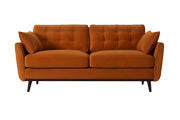
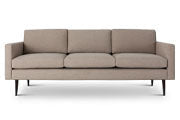 Model 01
Model 01
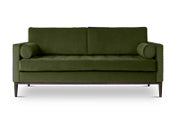 Model 02
Model 02
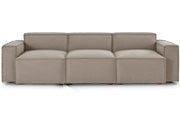 Model 03
Model 03
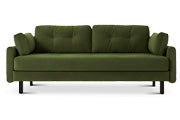 Model 04
Model 04
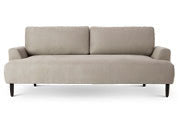 Model 05
Model 05
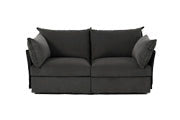 Model 06
Model 06
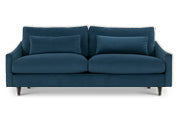 Model 07
Model 07
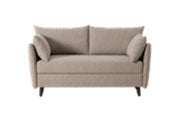 Model 08
Model 08
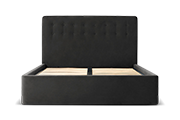

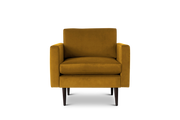
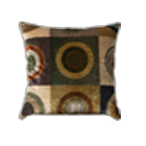
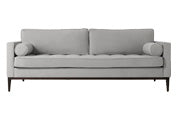
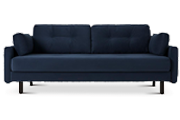





( 0 )Comments